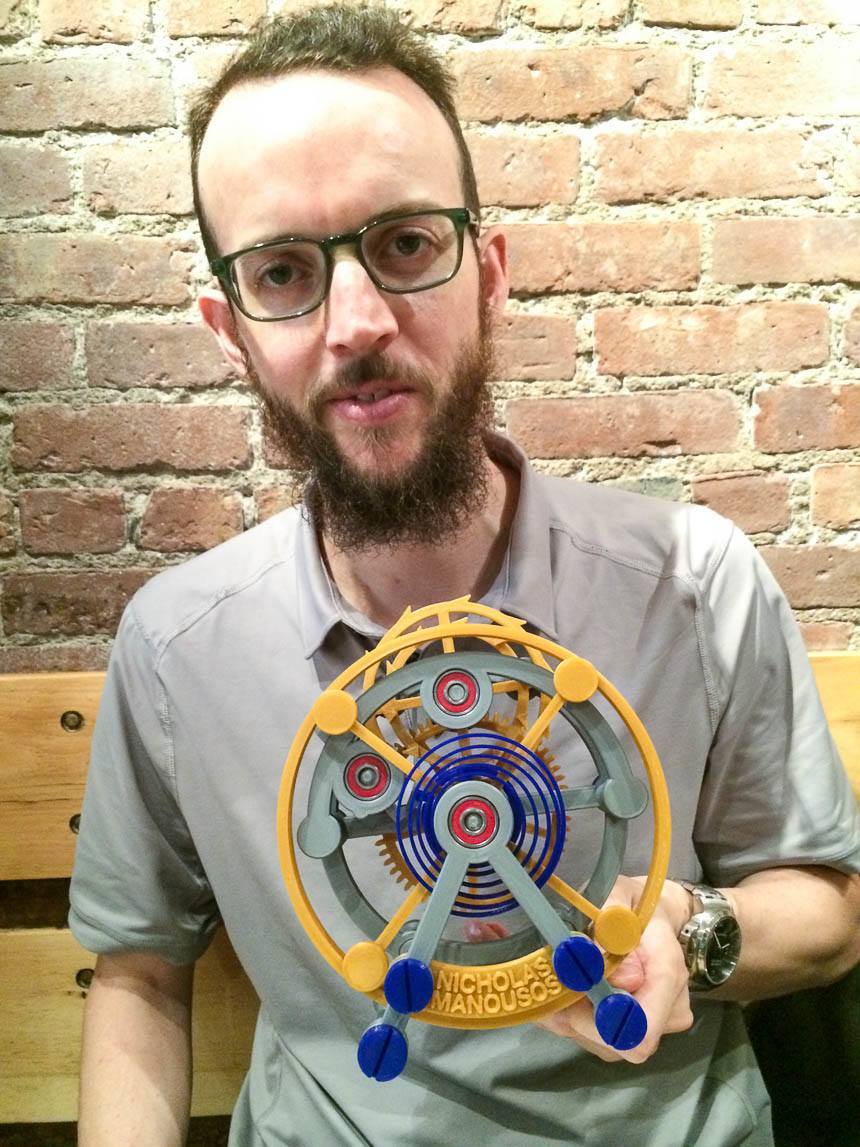
US-based watchmaker Nicholas Manousos has developed the world’s first 3D printed tourbillon. Named the Tourbillon 1000%, you can order one to own, and it is part of a larger movement project that Mr. Manousos has been working on for the last few years. Sooner than later, 3D printing technology will be able to produce fully functioning clocks and watches, but we are only now seeing the potential. Nicholas Manousos is a watchmaking pioneer.
Many people have asked what impact the world of 3D printing will have on the watch industry. While 3D printers are still relatively new, the allure of being able to produce watch movements and case parts immediately and locally is extremely tantalizing. Anyone who makes watches now will inform you that prototyping and production can take so long because going back and forth with suppliers and the companies who can make the parts you need is extremely time-consuming. Even large companies with onsite production still need to rely on the efforts of internal teams and traditional production techniques to prototype watches and movements.
3D printers allow people the ability to design a part and print it directly out of a base material. There is no milling or cutting. A part is literally printed in three dimensions. While the world of 3D printing is rapidly expanding, its consumer and prosumer offerings are still relatively basic. Watches and other highly precise items require parts that are either very small or have extremely small tolerances. Current 3D printing technology isn’t quite up to snuff.
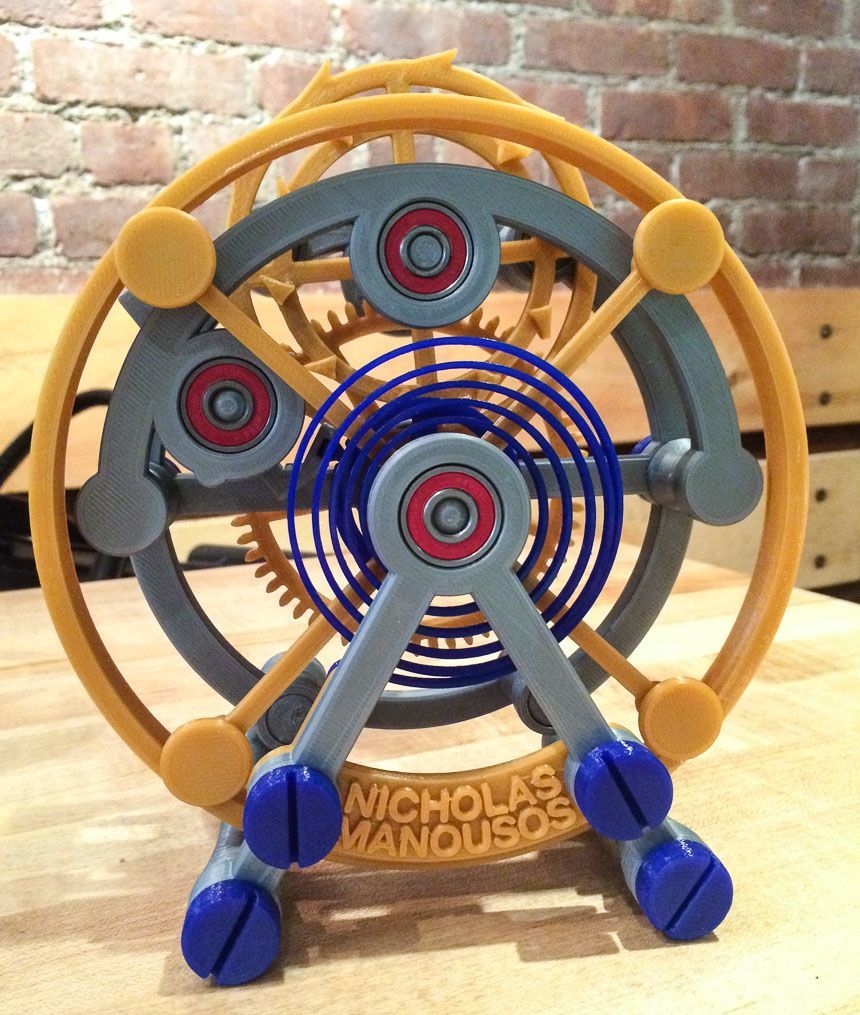
The name of Manousos’ Tourbillon 1000% comes from the fact that he developed the tourbillon to fit into a wrist watch, and blew up the CAD design to exactly 1000% to be printed using today’s technology. Having said that, the Tourbillon 1000% does not use off-the-shelf 3D printing technology.
According to Nicholas, the current 3D printing offerings available to him were not quite able to print the parts he needed. Thus, he built his own custom 3D printer to produce parts with the tolerances and quality he needed for the Tourbillon 1000%. Of course, there are still limitations that he is excited to see develop and improve over the next few years. Currently, he must contend with nozzle sizes that are still only so small, parts that would break if they were smaller, and platter sizes that are only for parts to be produced so large. So in a real way, the technology available to most 3D printing enthusiasts still limits size on both the large and small end, as well as the precision of parts made.
Nicholas Manousos did not produce the Tourbillon 1000% as a mere extension of a hobby in 3D printing. Manousos has a unique tale among today’s horological aficionados. A few years ago when I first spoke with him he was living in San Francisco and working as a software engineer. His dream was to become a watchmaker. Not because of luxury or precious materials, or building a watch with his name on it, but because of a deep appreciation for the mechanical engineering element of watches.
So Nicholas enrolled to go to watchmaking school in Miami, Florida and embarked on his mission to follow his heart. A few years later in 2014, and Nicholas is living in New York City and has been working relatively in private on producing his very own movement. 3D printing for him (I believe) was a logical way to prototype and test his ideas. A goal for many enterprising young watchmakers is to produce their own movement. For Nicholas it was to develop a tourbillon-based movement.
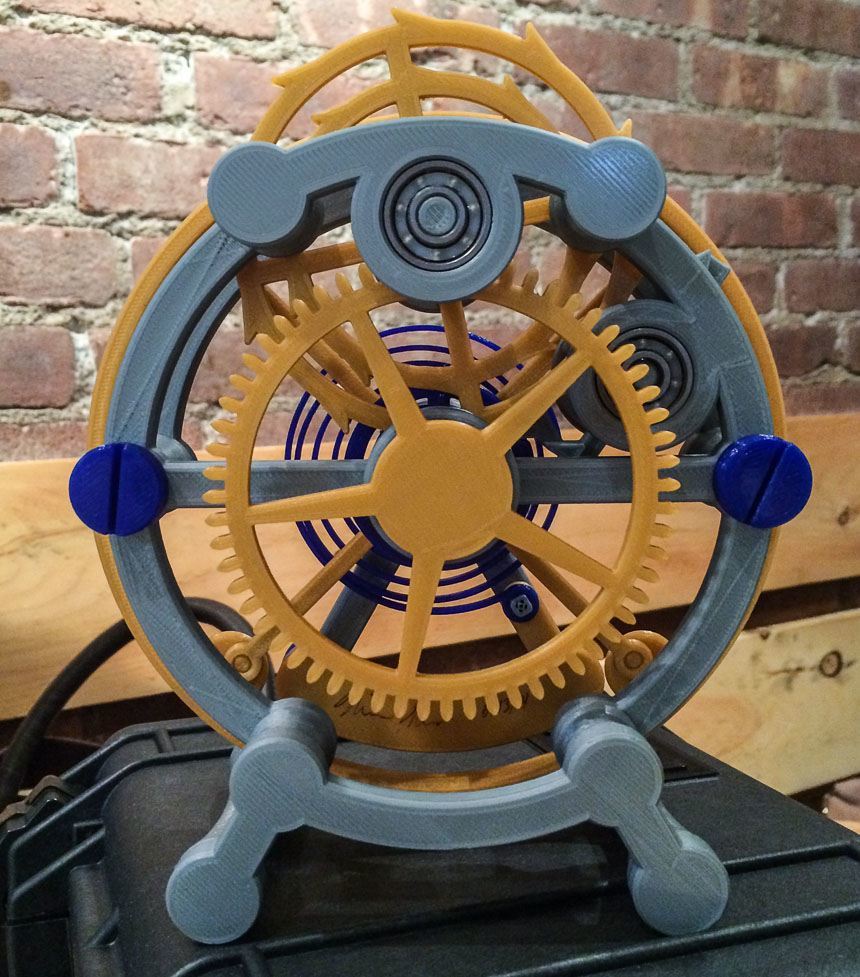
As I understand it, Nicholas went where most movement lovers go, and that is to the work of the late and great George Daniels. Many talented young watchmakers have found themselves “answering the Daniels call” by reading his texts and doing their best to create movements and parts on their own. Of course most fail, but that wasn’t an option for Manousos. In fact, he was able to produce a working version of something that George Daniel invented, but only on paper.
The Nicholas Manousos tourbillon is actually a Co-Axial tourbillon, but not like the ones Daniels generally produced. Apparently, in his text Daniels created at least two types of co-axial escapements. One was known as a “symmetrical co-axial escapement,” due to the shape of the escapement itself. George Daniels protege, watchmaker Roger Smith, confirmed to Nicholas that to his knowledge no symmetrical co-axial escapement had actually been produced.
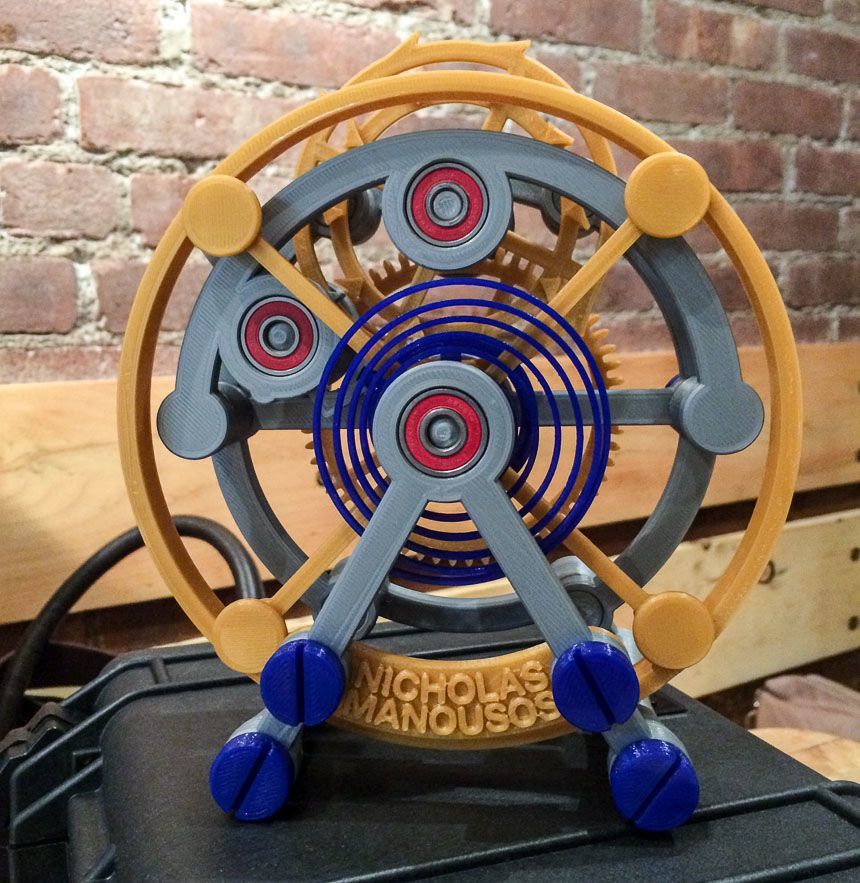
Part of the reason for this is that a symmetrical co-axial escapement takes up a bit more physical space. Of course this isn’t much of an issue in a mechanism that is blown up 1000% from what it would be in a wrist watch. So if you are a mechanical movement nerd and appreciate the work of George Daniels (as I certainly do), you’ll find what Nicholas Manousos has done to be of particular interest.
The Tourbillon 1000% is a product of about three years of work, and each tourbillon requires about two weeks of work to produce. The funny thing is that even though 3D printing technology is meant to produce items immediately and with a fast speed, the Tourbillon 1000% and items like it still require a lot of work. Why is that? Well first of all there are a lot of parts that go into it. Second, the parts need to be produced with a particular precision, which takes additional time. Third, even with all the careful printing, the parts that come out of the 3D printer still need to be “adjusted” by Nicholas.
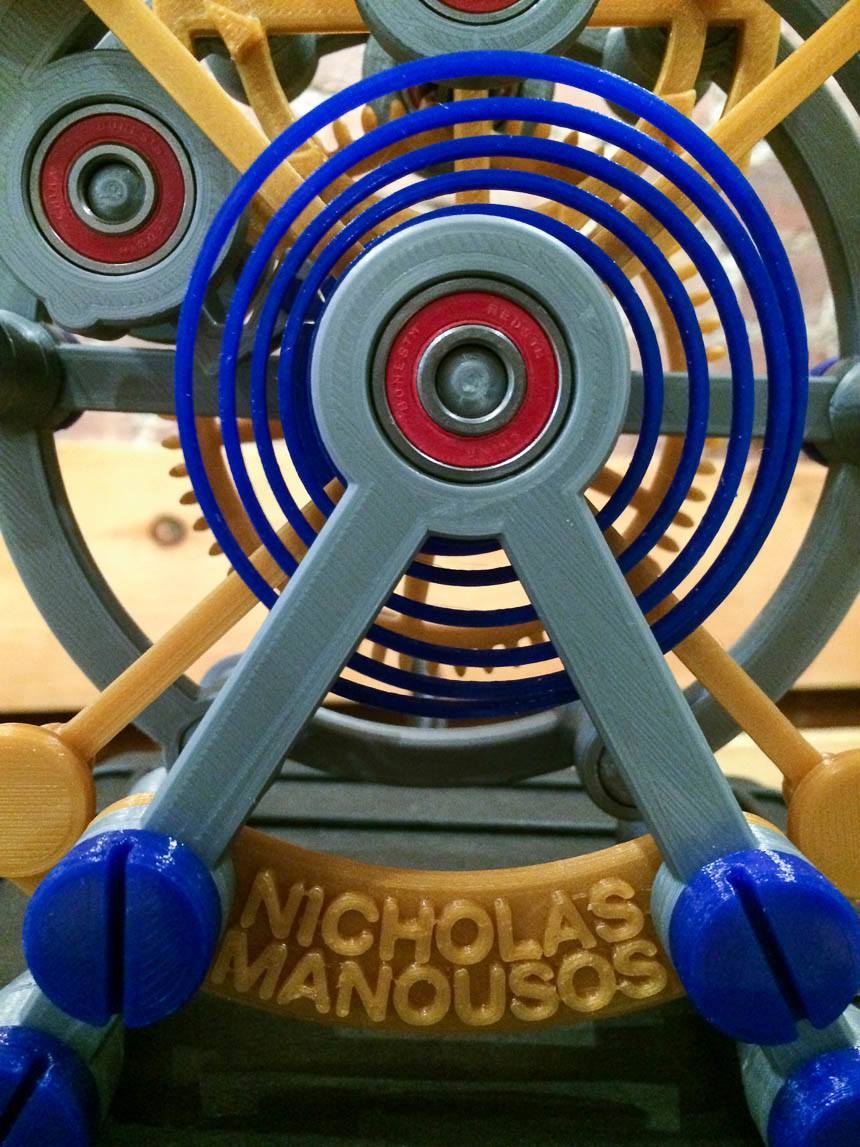
An obvious question I asked Manousos was, “assuming someone had the plans for your tourbillon couldn’t they just then print it themselves?” The answer is technically “yes,” but with a lot of “buts.” According to Nicholas even if someone was able to print directly from his CAD files and had his particular 3D printer set up, the tourbillon itself would not work. He said that the precise adjustments necessary are really what allows the system to even operate. While 3D printing is extremely exciting it still has a long way to go before basic digital plans can be exchanged between enthusiasts to produce precision machinery.
The Tourbillon 1000% is printed using PLA plastic (polylactic acid), which was selected due to its strength and ability to form relatively precise parts. Ironically enough, the plastic is cornstarch-based so it can biodegrade. The plastic is sensitive to heat so Nicholas advises people not to leave the tourbillon on or near places that can get to 300 degrees.
